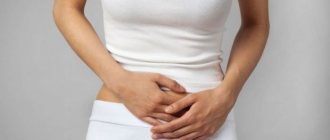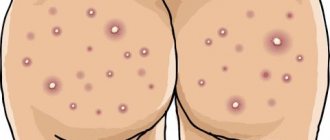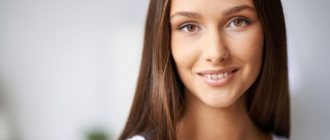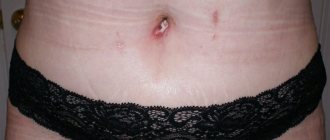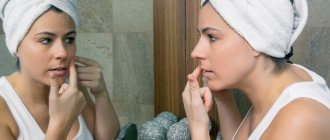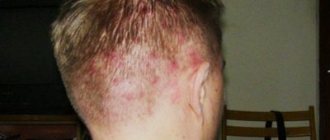The root of the problem of chest acne in men
Poll: When did your acne appear? (Number of votes: 4295)
I've been suffering all my life
It's been a couple of years now
About a few months
Recently
To vote, click on the desired answer. results
Just like diet, exercise plays a role in the appearance of acne on the face as well as on the chest in men, which can be caused by an inappropriate diet or lack of exercise. Since the skin is a massive organ, poor nutrition leads to less healthy skin Choosing healthy fats, getting enough protein, drinking more water, and plenty of vitamins and minerals found in fruits and vegetables often results in clearing up acne.
- Exercising, sweating and choosing clothes made from low-quality synthetic fabrics can also affect acne. Since excess sweat and oil can cause blockages in the subcutaneous fat leading to acne, it is important to take a light shower immediately after exercise if you have problems with acne. on the chest.
- Many people forget to change their bedding regularly Although it may not seem like a big problem, constant chest contact with dirty blankets can clog the skin, causing acne.
- Finally, some irritants can trigger acne Men who are sensitive to oils, creams, lotions and fragrances may find that pimples appear on their chest after using them. If this is the case, consider using only natural oils, such as coconut or avocado oil. Quite light and well suited for sensitive skin.
Tight clothing that constricts or restricts areas of your body can also cause acne. Friction or pressure on the skin, combined with heat or sweat, can irritate and inflame the follicles, causing mechanical acne. When choosing clothes, don't buy clothes that are too small; instead, choose lingerie and suits that suit your size and body shape.
Causes of acne in adults
11.11.2021
Acne is most often associated with a problem among teenagers. Probably, most of us in adolescence struggled with acne on the face , appearing unexpectedly and at the most inopportune moment. Acne is associated with major hormonal changes that occur in our body during this turbulent period. Teenage acne can be more or less persistent, the skin is usually oily, seborrheic, and pimples most often appear on the forehead, nose and chin, that is, in the so-called T-zone. What to do when you approach 30, even 40 years old, puberty and hormonal storm are already behind you, but the problem persists? Such ugly skin lesions deprive us of self-confidence, cause many complexes, reduce self-esteem, and cause disappointment, which affects our professional and personal lives.
Causes of acne in adults
This problem affects women more (approximately 12%) than men (up to 3%). Contrary to popular theories that hormones , they are less important in this case. Yes, these are not rare cases when women struggle with endocrine disruptions. This happens, for example, when we stop taking birth control pills. Acne medications :
- Creams, ointments, supplements
- Cleansing patches
- Spot treatments
- Day creams, night creams
- Facial gels , peelings
- Masks, tonics
A consultation with a gynecologist or endocrinologist will be required to determine the level of hormones at different levels (sex and thyroid hormones , hypothalamus, pituitary gland , adrenal glands) to eliminate deeper health problems.
The main reason is a busy lifestyle and stress, which stimulates the adrenal cortex to produce cortisol. An unhealthy diet , rich in highly processed foods and a high glycemic index, increases the production of androgens due to rapid spikes in insulin, which also causes increased seborrhea . Very often, acne is also a symptom of lactose intolerance, found in milk and dairy products. Working indoors with air conditioning, environmental pollution, smoking, and improper care, unfortunately, only work to the detriment of our skin.
How is acne in adults different from acne in teenagers?
- skin lesions are located elsewhere, i.e. most often in the lower face , around the jaw, mouth , chin and neck
- They are not as intense, but last a long time, leaving permanent scars, discoloration and unevenness on the skin.
- the skin, despite the increased production of sebum, tends to dry out
- hyperkeratosis occurs at the mouth of the hair follicles, where anaerobic bacteria begin to multiply
How to cure acne in adults?
Unfortunately, treating acne in adults is very complex, time-consuming and requires a lot of systematic work. acne care does not bring the desired results and even increases dry skin, such a person sooner or later turns to a dermatologist . The most commonly used antibiotics are antibiotics (tetracycline, doxycycline) and retinoids. The former are very often effective only during treatment, and after its completion, skin problems return. However, problems may arise due to dysregulation of the bacterial flora of the gastrointestinal tract.
The effectiveness of isotretinoin, on the other hand, is much greater, but treatment with it is not the most pleasant and requires greater sacrifice. Isotretinoin is a derivative of vitamin A, a more aggressive form, and its exact mechanism of action is not fully understood. It regulates the processes of differentiation of epidermal cells, inhibits the activity of glands, which reduces the production of sebum. During the first stage of treatment, when the skin is cleared, its condition may deteriorate sharply, but the subsequent effects are impressive. The minimum treatment period is 5-6 months under strict medical supervision. Unfortunately, the side effects of isotretinoin are very unpleasant and problematic, and the list is long, such as excessively dry skin, liver , hair loss, and even depression .
Locally, for lesions on the face , gels or creams with antibiotics (erythromycin, clindamycin), with benzoyl peroxide, which acts on anaerobic bacteria, with retinoids, azelaic acid, adapalene with keratolytic, anti-inflammatory and anti-acne properties are prescribed. Caring for such problematic skin and the correct selection of cosmetics are of great importance. The skin should be thoroughly cleansed with mild water-based preparations (avoid milk), moisturized with non-comedogenic creams rich in plant extracts, vitamins C and E, retinol (its milder forms, for example, retinaldehyde), and delicate peels should be performed, preferably based on glycolic or salicylic acid. acid.
It is also recommended to take B vitamins, especially vitamin PP (niacin), biotin, vitamins E, C and trace minerals such as zinc, selenium and copper. The beneficial properties of pansies for skin conditions have also been known for centuries . Let's not forget to change our diet to more fresh fruits and vegetables, limit highly processed foods, fast food full of unhealthy fats, sweets and salt.
Published in Dermatology Premium Clinic
Acne on the chest in men Treatment
Chest acne can be treated using medications or changing certain habits, or a combination of both. This is often enough to provide relief and relief from chest inflammation.
Take the following habits as a rule:
- Wash the area where pimples appear on your skin twice a day with a mild, gentle soap;
- Wash your hair when you feel it is oily If you have long hair that reaches your chest, then oily hair can contribute to chest acne;
- Take a shower immediately after working out or heavy sweating, without waiting for pimples to appear on your chest;
- Avoid exposing chest acne to too much sun;
- Use sunscreens that do not contain oil because they will not clog your pores.
- Use tea tree oil during treatment, the application of which can help reduce acne.
- Using creams and lotions containing zinc can also reduce acne.
- To treat chest acne, use creams and gels with ingredients such as benzoyl peroxide, sulfur, resorcinol, or salicylic acid.
If the above self-treatment methods do not lead to positive results, seek help from a dermatologist. Dermatologists specialize in skin conditions and can help you determine what is causing acne on your chest. Your doctor may prescribe stronger topical medications or oral medications.
What not to do
There are some factors that contribute to the appearance of more pimples or lead to skin irritation:
- The use of detergents and hygiene products that are strong on the skin and contain alcohol, which dries out the skin, in any percentage.
- Squeezing pimples, which will only lead to the appearance of new pimples, both on the chest and on any other areas of the skin. Also, squeezing pimples can lead to the appearance of scars and scars on the skin.
- Sweaty clothes after a workout can trigger acne on your back and chest.
If your pimples don't look like regular acne, are especially painful, or don't go away with regular treatments, see your doctor. A dermatologist can evaluate the appropriate treatment for such acne or determine other, more serious, causes of its occurrence.
Causes of pathological skin rashes
Pathological rashes on the chest can occur for many reasons; they often become characteristic symptoms of various diseases of the body.
- Allergy. The body's pathological reaction to various allergens (food, medications, animal hair, etc.) is often accompanied by the appearance of skin rashes.
- Dermatological diseases. Inflamed skin and various types of rashes are symptoms of skin diseases. The most common are prickly heat of newborns, eczema, psoriasis, dermatitis, acne, etc.
- Infectious and viral diseases. A certain type of rash is a characteristic symptom of many infectious diseases: rubella, chickenpox, scarlet fever, meningitis, herpes, ringworm, syphilis.
- Diseases of internal organs. A rash on the chest can appear with liver failure, diseases of the pituitary gland and adrenal glands, with dysbacteriosis, hormonal disorders and other pathologies.
- Tumor diseases.
The appearance of rashes can be caused by non-compliance with personal hygiene rules, excessive sweating, the use of low-quality cosmetic care products, ill-fitting underwear and other reasons.
The sudden appearance of intense rashes on the body, pain, swelling, redness of the skin, fever or recurrent nature of the rash is a reason to consult a specialist. Self-medication can only aggravate the problem and lead to serious complications.
Treatments that require more time and a higher budget
While all of the above methods are worth trying, some acne cannot be treated without the help of more intensive methods, ranging from dermatological interventions to spa treatments. These methods usually require a large investment of both time and money and should be considered based on your actual capabilities. wallet
Dermatologists who specialize in skin diseases may prescribe oral or topical medications to treat acne. Unfortunately, few dermatologists work in public clinics, and most often work in independent private practice. Because of this, the treatment process can cost you “ for a pretty penny."
While the treatments listed above are usually easy and inexpensive, there are some creams and medications available over the counter to treat acne that are more expensive, although they may also be more effective. When considering these more expensive creams and treatments, be sure to read product reviews and pay close attention to the skin type and problem you're targeting; Not all products are designed for oily or sensitive skin Generally, salicylic acid creams are effective in treating acne on both the face and body.
Other treatments may be available in SPA and dermatology departments. These include: microdermabrasion, chemical peels and light therapy. Each of these therapies has increased risks compared to home treatments or topical medications, but can also provide much greater benefits.
Microdermabrasion involves removing the topmost layer of skin, revealing the healthier, more youthful skin underneath. Chemical peels do the same thing, although they cause more blemishes and redness. Light therapy, one of the fastest, though not exactly cheap, ways to get rid of acne , seeks to eradicate the root cause of acne through light therapy, treat acne on a more permanent and consistent basis. As with any procedure, consult with a qualified professional and weigh all possible consequences before embarking on a specific type of therapy and treatment.
Types of rashes on the chest
- Dry scales. They are dead cells of the epidermis. Most often occur in women after 40 years of age. They do not pose a health hazard.
- Small red spots with a clear bubble inside. In most cases, they are a manifestation of an allergic reaction, causing itching and discomfort.
- Crusts that form after wounds have healed. When infection penetrates, an inflammatory process with purulent contents may develop underneath them.
- Small acne or papules. Appear due to hormonal imbalance, more often during pregnancy or the postpartum period.
- Urticaria is an allergic skin reaction that may be accompanied by swelling, shortness of breath, and nausea. Volumetric pink rashes of various shapes can merge into large lesions.
- Erosion. It represents small pathological areas of skin damage with cloudy contents and an unpleasant odor. May be the result of ulcers or pimples.
- Ulcers. Deep skin damage that takes a long time to heal and leaves behind scars.
What can be concluded?
Skin care involves many methods that vary greatly from person to person and also depending on the symptoms of acne. Fortunately, there are many methods available both at home and in professional beauty salons to combat acne and remove acne marks with skin on the chest Using the above tips and recommendations, men can avoid the problem associated with the appearance of acne on the skin of the chest or back.
Dear friends, if you can share your experience of treating acne in the chest area or on other parts of the body, share it in the comments to this article. Your experience will be very important to us, because many readers of our site will be able to take advantage of your warnings or tips for treating acne We will be sincerely grateful to you!
Also in the comments block you can ask any questions regarding the occurrence and treatment of skin diseases, to which our dermatologist will try to answer you. We will be happy to help you!


